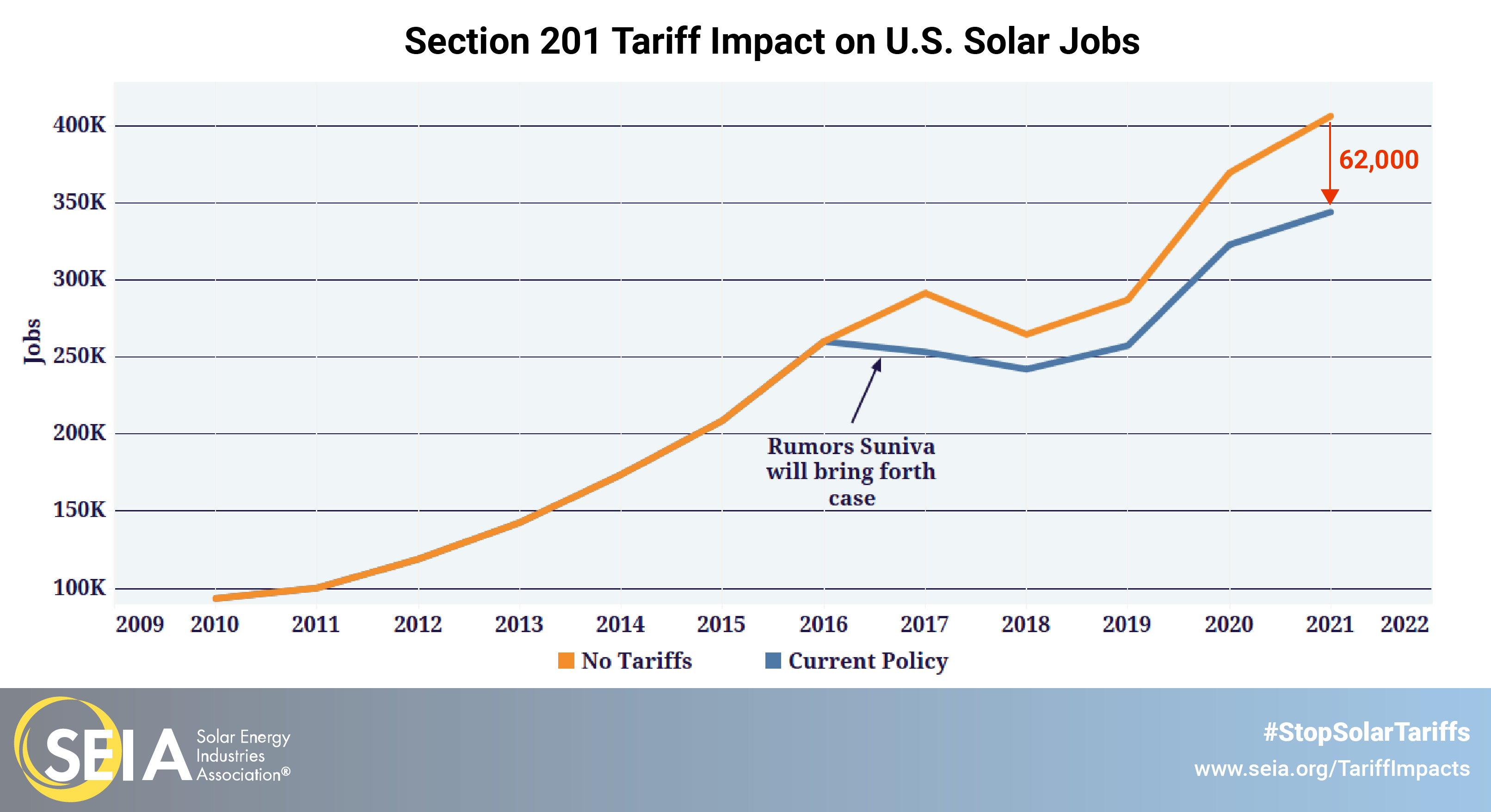The High Cost of Tariffs
The Section 201 tariffs on solar cells and modules have caused great harm to the U.S. solar industry and the broader economy:
- 62,000 workers laid off or never hired
- 10.5 gigawatts of solar capacity lost
- $19 billion in private sector investment lost
- U.S. solar module prices now among the highest in the world

Tariffs on crystalline silicon photovoltaic cells and modules have cost the country thousands of jobs, billions in private investment and have slowed progress in addressing climate change
In early 2017, a domestic crystalline silicon photovoltaic (c-Si PV) cell manufacturer submitted a petition to the U.S. International Trade Commission (USITC) seeking protection from international competition in the form of minimum import prices that would have doubled the cost of c-Si PV products in the U.S.
The investigation leading up to the tariffs created uncertainty for U.S. solar businesses, greatly disrupting markets in 2017 and 2018. In January 2018, the president signed an order imposing “safeguard” tariffs on c-Si imports from all countries for four years, along the following schedule:
| 2018 | 2019 | 2020 | 2021 |
| 30% | 25% | 20% | 15% |
Section 201 Tariffs Have Harmed the U.S. Economy & Environment
U.S. solar panel prices are now among the highest in the world
- Prices are 43 – 57% higher than the global average, leading to higher prices for customers and reducing overall demand.
- More than 10.5 GW of solar installations will not be deployed due to tariffs.
- This unrealized deployment would have produced enough electricity to power 1.8 million homes.

More than 62,000 jobs have been lost or were not created
- As projects have been delayed and canceled, thousands of Americans have been laid off or not hired.
- Even accounting for domestic module manufacturing jobs added since the tariff was imposed, on net the industry has lost or not created 60,000 jobs.
- These figures do not account for the thousands of non-module manufacturing jobs that have been negatively impacted due to reduced U.S. solar demand.
The tariffs will cost the economy more than $19 billion in unrealized investment
- Tariffs effectively act as a tax on consumption, forcing consumers to pay higher prices for solar or pay more for other electricity sources.
- In a competitive marketplace for electricity, tariffs tilt the playing field unfairly against solar.
- Solar cell and module tariffs are costing the U.S. economy more than $10.5 million per day in unrealized economic activity.
Tariffs have slowed U.S. progress on climate and environmental issues
- As a consequence of reduced solar deployment due to tariffs, CO2 emissions will increase by more than 26 million metric tons.
- This is equivalent to the emissions from 5.5 million cars or 7 coal plants.

